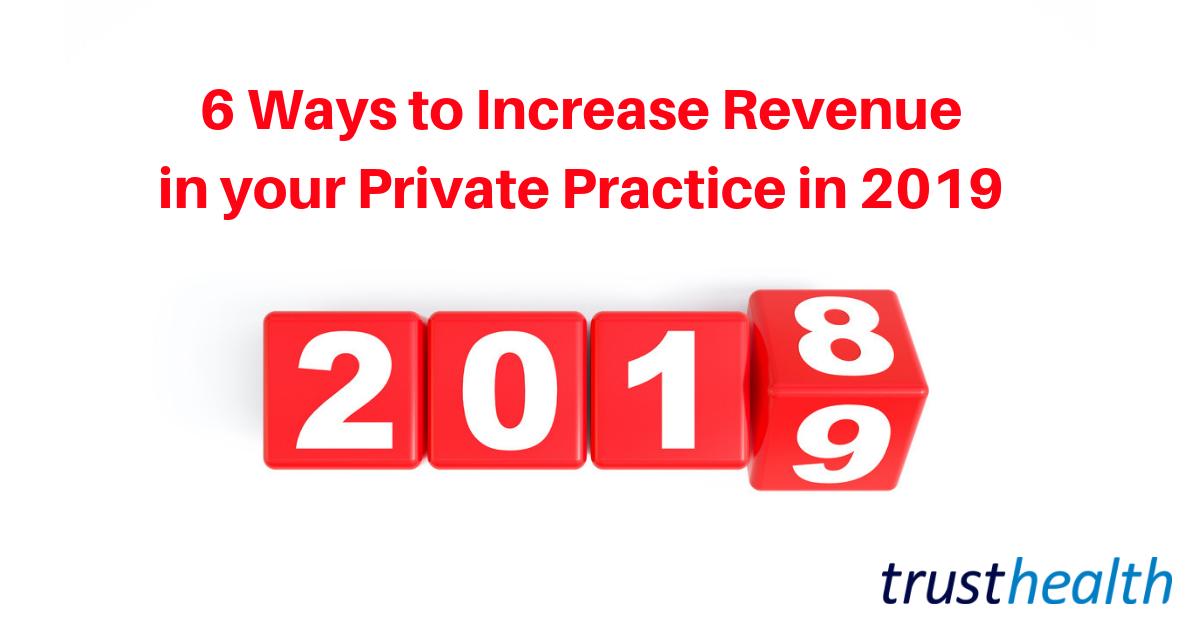Now we are reaching the end of the year, it’s a good time to take stock and consider your private practice income. Take a few hours off over the Christmas break and delve a little more deeply into the ‘back end’ of your practice. There are numerous ways in which you can increase the revenue in your private practice in 2019 and a good starting point is to think about the following.
Reduce your operating costs
It’s easy to overlook the combined operational costs for your business but there may be ways in which you can reduce costs without compromising on quality. For example:
- would it be cheaper to outsource some aspects of your practice? e.g. typing, billing, telephone answering.
- can you find a cheaper credit card transaction provider?
- can you get a better value telephone contract for mobiles and landlines?
- maybe you could share resources with other colleagues to reduce overall costs
Review your Fees
I’m guessing it would be some time ago since you last increased your fees and you may feel concerned about doing so. But your expenses and running costs are increasing and it is not unreasonable to increase your self-pay fees by a small margin for both consultations and procedures.
Regarding insurer fees, despite being told to the contrary, even if you are fee assured there can be room for negotiation. Consider how you are different from your colleagues?
- are you an expert in your field?
- how many colleagues offer similar services in close proximity to you?
- are your outcomes better than the average?
Think about the benefits your patients (and therefore their insurers) receive when they see you and use this to your advantage.
Indemnity
Consider changing indemnity provider. Typically consultants are with one of the ‘biggies’ but in fact you can usually find significantly cheaper insurance elsewhere, and with better benefits. With the traditional providers your risk is lumped in together with everyone else, so your indemnity premium could be subsidising their negligent claims. If you have a low claims history, looking at alternative providers who offer insurance based on your risk alone, can save you literally thousands.
Check on your marketing spend
When was the last time you checked the ROI on your marketing costs? Do you know how much you spend on adverts, flyers, magazine articles, GP meetings, etc versus the income you receive? Make sure you track your referrals (ask your secretary to check with new patients how they found out about you) as this will quickly highlight any marketing costs that are not bearing fruit.
Make sure you are marketing locally as this is where your patients are most likely to come from – ensure your website comes up in Google when local patients search. In addition, build up a referral network with local GPs and colleagues within your field.
Boost your curb appeal
Review your practice and how it looks from a patient’s perspective. Are you attractive to them?
- Make sure your website is patient friendly, and by that I mean have content they can relate to. They don’t understand your medical paper submissions for example.
- patients love to read reviews, so make sure you include some.
- write blogs about content that patients want to read about
- post on LinkedIn
- upload podcasts or vlogs.
In essence, make sure patients know you are an expert in your field so they want to come and see you.
And finally, make sure you are getting paid!
If you aren’t getting paid for the work you have done, then none of the above matters. Typically consultants assume it’s all in hand, but often when practices are busy, invoicing and equally as importantly the credit control, are areas that get missed. Check that your invoices are being sent out daily, check that payments are being received and importantly, check that all insurance shortfalls are passed on to the patients and that they pay.
Should you require any help with your private practice, or outsourcing, please get in touch with Sally Barr at [email protected]
